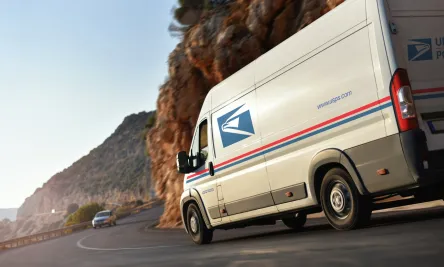How are government and private carrier services adapting as online communication and purchasing practices continue to supplant traditional paper mail? According to McKinsey, the global volume ratio of letters to parcels declined from 13:1 in 2005 to 4:1 in 2015 and is expected to reach 1:1 parity by 2025. Total U.S. parcel volume declined 2% in 2022 due to a reduced volume of traditional mail, marketing materials and periodicals. At the same time, the share of U.S. retail sales made online doubled in just a decade, creating greater demand for package delivery services. But revenue generated from shipping packages has increased recently, with carriers earning $198 billion in 2022, a 6.5% increase over the previous year. United Parcel Service led with $73 billion, followed by FedEx ($65 billion), United States Postal Service (USPS) ($31 billion) and Amazon Logistics ($24 billion). USPS was the parcel shipment leader in 2022, with 6.7 billion parcels. ‘Tremendous opportunity’ in ecommerce As mail volume continues to decline, “postal and mailing businesses are shifting from state-owned monopolies to commercial companies with diversified portfolios,” says Mordor Intelligence, a global market research firm. That means government and private carriers favor collaboration as much as competition. While USPS has a legal monopoly in the delivery of letters, it contracts air transportation to major express delivery companies as FedEx and UPS, which in turn contract some residential deliveries to USPS. “Ecommerce represents a tremendous opportunity to postal services as consumers become increasingly comfortable with ordering items online from emerging ecommerce platforms, as well as traditional brick-and-mortar making the transition to digital environments. As the volume of online sales increases, ecommerce providers are seeking cost-effective channels for the delivery and collection of purchased items,” says Mordor Intelligence. And government postal services, with their long-established national...

